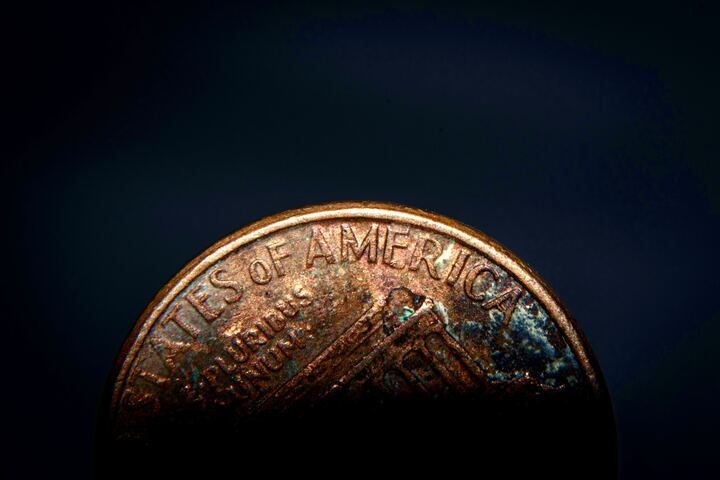Who is winning the trade war? After nine rounds of consultations aimed at ending a standoff that has shaken the world economic outlook, the answer remains unclear. Chinese negotiators led by Chinese Vice Premier Liu He met with President Trump to continue trade talks on April 4 in Washington. The trade talks wrapped up with no clear timeline for resolution nor a potential summit between Mr. Trump and Chinese President Xi Jinping, but with both sides touting progress and vowing to continue talking via videoconference.
“This is an epic deal, historic—if it happens,” Mr. Trump said. “We’ll see what happens.”
While the two sides are closer to an agreement than at any point in the past, the Trump administration may be further away from achieving its key goals. The U.S. wishes to use the trade talks to push China to adopt a more market-oriented economy, however, large purchases from China may only reinforce the economic power of the Chinese state and undercut Trump’s larger trade deal. Any agreement between China and the U.S. seems certain to involve China’s purchase of hundreds of billions of dollars of American goods, which will largely reduce the United States’ record trade deficit with China and bolster farmers and other constituencies hurt by the trade war. But those purchases will likely be ordered by the Chinese state, and most will be carried out by state-owned enterprises, which may further strengthen Beijing’s role in managing its economy and could make U.S. industries even more beholden to the Chinese. Initiated in large part to try to reorient the Chinese economy and force it to become more open to American companies and investment, the President has pressed China to roll back its heavy-handed involvement in the economy by using punishing tariffs as leverage. The U.S. demands that Beijing curtail subsidies to its state-owned firms and to end its practice of forcing foreign companies to transfer their technology to Chinese competitors.
The Chinese State has an even heavier hand in the economy than a decade ago, according to Nicholas Lardy*, a senior fellow at the Peterson Institute for International Economics. The Xi administration placed more emphasis on increasing the size of the State as a way to consolidate political control. Private companies have been squeezed out by state businesses in terms of shrinking bank credit and investment share, slowing growth rate as well as growing anti-competition mergers led by SASAC. In addition to the state’s ownership of major industry sectors, the ruling Communist Party can influence private companies at will, and foreign companies face a variety of forms of discrimination that advantage Chinese firms.
As both sides work towards the final deal, cloud computing, data handling and other issues surrounding the technology sector are now at the forefront of negotiations. During Trump’s meeting with Chinese Vice Premier Liu He on April 4, China revised an earlier offer on cloud-computing access, offering to issue more licenses and to lift the 50% equity cap that limits ownership for certain foreign cloud-service providers, the people said.
Treasury Secretary Steven Mnuchin said Wednesday that the two sides have agreed to set up enforcement offices to monitor compliance with an eventual deal, suggesting progress on one stumbling block. China is offering changes to its foreign investment laws as a necessary first step to eradicate the number of undesired practices, but ultimately rewriting the laws may not do much good when the party is fundamentally above the law.
“Talking about rule of law and protecting property rights is one thing, but actually following through on it is a very difficult thing for a system where the party has been so deeply embedded for a long time and the rule of law is secondary,” Mr. Lardy said.
Amid trade war worries, China’s state business giants are stretching out their arms. China’s three state-owned oil companies are boosting domestic and overseas investment with the aim of increasing crude oil and natural gas output. Spending is expected to jump nearly 20% as companies are trying to guarantee greater energy security in case relations between Beijing and Washington fail to improve. The study also shows that the trade war appears to have “no effect” on the Chinese steel sector, where China is the largest producer and consumer of the material. The Chinese steel producers are not only propped up by “surging domestic demand” but also enjoy more tariff exemptions from Trump’s tariffs than those from US allies Canada, South Korea, Spain, and the United Kingdom.

The U.S. and China are aiming to reach a trade deal, but the date has been constantly pushed back. The White House said that talks had been productive but cautioned that daunting issues remain—including when to lift punitive tariffs against Chinese imports, protection of U.S. intellectual property and enforcement of the pact’s provisions. President Trump also stopped short of a summit meeting with China as news of a possible summit spurred a backlash among some of the president’s trade advisers. Trade experts argue that setting a date could telegraph President Trump’s eagerness to strike a deal and reduce the U.S.’s bargaining leverage on the final points.
* Dr. Nicolas Lardy, Senior Fellow from Peterson Institute for International Economic, spoke on April 2 at JHU SAIS China forum- The State Strikes Back: The End of Economic Reform in China?
Xue Lin is a research assistant at ICAS and a M.A. candidate at Johns Hopkins SAIS in Washington, D.C.




